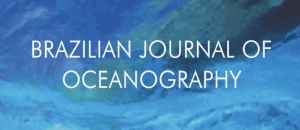Marcos César de Oliveira Santos, Editor-in-Chief of the Brazilian Journal of Oceanography, Department of Biological Oceanography, Oceanographic Institute, São Paulo, São Paulo University, SP, Brazil
Meteorological tsunamis (usually known as meteotsunamis) are typically recognized as long ocean waves produced by atmospheric processes (for example, atmospheric gravity waves, pressure jumps, squalls or frontal passage). They are frequently observed at the same sites with pronounced local resonant properties (MONSERRAT, et al., 2006). Meteotsunamis, with periods varying from a few minutes to almost 3 h and heights typically lower than 1 m have been frequently observed in different tide stations located between Mar de Ajó and Quequén along the Buenos Aires coast, Argentina (INMAN, et al., 1961; DRAGANI, et al., 2002).
Based on the occurrence of simultaneous atmospheric gravity waves and long ocean wave events, similarities of the spectral structures of both waving phenomena and the high effectiveness in the atmospheric-ocean energetic transference, it was concluded that atmospheric gravity waves are the most probable forcing mechanism able to generate meteorological tsunamis on the Buenos Aires Province inner continental shelf.
Simultaneous active lapses of meteotsunamis and atmospheric gravity waves, recorded at Mar del Plata tidal station, were investigated in the paper “Spectral variability in high frequency in sea level and atmospheric pressure on Buenos Aires Coast, Argentina” published in the first issue of 2017 of the Brazilian Journal of Oceanography. The authors presented and discussed the application of wavelet analysis for the first available data series of simultaneous high resolution atmospheric pressure and sea level data series gathered at the Buenos Aires coast.
Observed results reinforce the idea of a cause (atmospheric gravity waves) and effect (meteotsunami) relationship, because wavelet spectra structure obtained from both signals resulted quite similar. However, several very short episodes of moderate/low activity of atmospheric gravity waves were detected without detecting meteotsunami activity. It was suggested that a delicate energy transference mechanism from the atmosphere to the ocean could play a significant role to explain some of the identified differences between sea level and atmospheric pressure wavelets spectra.
Results presented in this paper also provide original spectral information about atmospheric gravity waves along the coast of Buenos Aires. This spectral information is useful to be included in realistic numerical models in order to investigate the genesis of this complex atmosphere-ocean interaction between atmospheric gravity waves and meteorological tsunamis.
The understanding of more and more details of natural phenomena can be useful to human societies in two main ways: (1) to provide us the possibility of predicting and probably avoiding 2 effects of natural disasters based on working on previous management plans directed towards the population that live along the shoreline, and (2) provide us the baseline information to invest on better ways to use the shoreline.
References
DRAGANI, W. C., MAZIO, C. A. and NUÑEZ, M. N. Sea level oscillations in coastal waters of the Buenos Aires province, Argentina. Cont. Shelf Res. [online]. 2002, vol. 22, no. 5, pp. 779-790 [viewed 06 april 2017]. DOI: 10.1016/S0278-4343(01)00096-6. Available from: http://www.sciencedirect.com/science/article/pii/S0278434301000966
INMAN, D., MUNK, W. and BALAY, M. Spectra of low frequency ocean waves along the Argentine shelf. Deep Sea Research (1953) [online]. 1961, vol. 8, no. 3-4, pp. 155-164 [viewed 06 april 2017]. DOI: 10.1016/0146-6313(61)90018-1. Available from: http://linkinghub.elsevier.com/retrieve/pii/0146631361900181
MONSERRAT, S., VILIBIĆ, I. and RABINOVICH, A. B. Meteotsunamis: atmospherically induced destructive ocean waves in the tsunami frequency band. Nat. Hazards Earth Syst. Sci. [online] 2006, vol. 6, no. 6, pp. 1035-1051 [viewed 06 april 2017]. DOI: 10.5194/nhess-6-1035-2006. Available from: http://www.nat-hazards-earth-syst-sci.net/6/1035/2006/
PEREZ, I., WALTER, D. Spectral variability in high frequency in sea level and atmospheric pressure on Buenos Aires Coast, Argentina. Braz. j. oceanogr. [online]. 2017, vol. 65, no. 1, pp. 69-78 [viewed 06 april 2017]. DOI: 10.1590/s1679-87592017130506501. Available from: http://ref.scielo.org/5k9wrz
External Link
Brazilian Journal of Oceanography – BJOCE: <http://www.scielo.br/bjoce>
Como citar este post [ISO 690/2010]:













Recent Comments